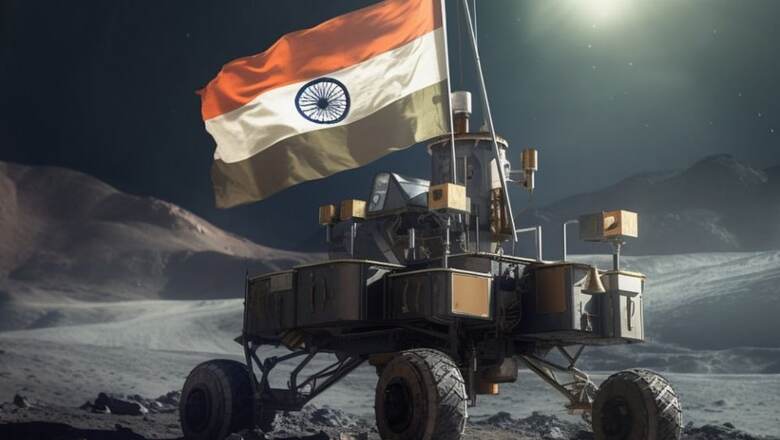
views
The day of 23 August was historic for India and the Indians. When the Chandrayaan-3, India’s third lunar exploration mission, was landing on the moon’s surface, the Indians were watching nervously across the width and breadth of India and around the globe. The moment the Vikram lander landed successfully and made India the first-ever country to land on the moon’s south pole, we all cheered with happiness. The nation of 140 crore Indians was over the moon–literally and metaphorically.
Chandrayaan-3 is a cost-effective mission with a budget of just ₹615 crore, or $75 million. The flop movie Adipurush had a similar budget, and films like Barbie and Oppenheimer had more funding than our moon mission. India’s moon mission has a budget of just 1 per cent of the one-year budget of NREGA, one of India’s many social welfare schemes. It prompts us to ponder: Does a modest science budget evoke a sense of pride or cast a shadow of shame?
Research and development in various science, technology, and engineering sectors have faced a budget crunch in India since independence. Most of the innovations that happened post-independence were on a frugal budget. Here, frugality was not a choice but a compulsion under the license-quota-permit raj. But India can’t live with this. In an interview, K Sivan, ISRO’s former chairman, said, “We need bigger rockets and systems. We cannot live with frugal engineering alone. We need to have high-power rockets and high-end technology.”
The triumphs of Mangalyaan and Chandrayaan-3 underscore the capacity of India’s scientific community to innovate and excel on a global stage. With increased financial backing, we might have already achieved manned space missions. However, within a democratic republic where welfare remains a paramount concern, diverting more government funds towards science and technology could face resistance, particularly when it involves reducing the budgets of social welfare programs, as seen after the 2023 budget announcement. This contrast leaves the space sector with two viable pathways: privatisation or international collaboration.
Chandrayaan-1 notably uncovered the presence of water in ice form on the moon’s surface, opening doors to further exploration of its utility. Converting moon water into fuel presents the prospect of cost-effective lunar missions in the future. Yet, capital investment is crucial for such research. In a nation abounding with brilliant scientists and engineers, the responsibility to fund these endeavours should shift towards the private sector, whereby investing companies could reap profits. However, the substantial costs involved demand a collective effort, necessitating international cooperation for mutual advantage.
The present space sector in India is synonymous with the ISRO and its suppliers and vendors. Privatisation will make the space sector cost-competitive and create more jobs locally. For example, imagine Skyroot Aerospace, which launched the maiden flight of India’s first privately built rocket, Vikram-S, in November 2022, launching satellites of other countries from Sriharikota. Envision a space tourism venture catering to Indian billionaires’ thirst for adventure among the stars or the realisation of an entirely indigenous navigation system. This is the economic landscape we must cultivate.
Despite India’s notable achievements, its share of the global space economy stands at a modest 2-3 per cent, whereas China and the US have more than 30 per cent share. Failing to translate our scientific strides into economic gains would be a missed opportunity. India possesses a latent potential where the sky, metaphorically speaking, is not the limit.
To be fair, the current government has laid the privatisation card on the table for the space sector. Initiatives like granting private players access to ISRO’s infrastructure and formulating the Indian Space Policy in 2023 reflect a well-intentioned effort. However, progress has encountered delays—such as the Indian Space Policy notification—and legislative roadblocks, exemplified by the fate of the Draft Space Activity bill introduced in 2017, which lapsed in 2019 with the outgoing Lok Sabha. This perpetual tardiness exacts a toll on India’s space endeavours.
In conclusion, while Chandrayaan-3’s accomplishment is a commendable stride for India, its financial constraints make a compelling case for liberalising the space sector. The earlier we do, the more beneficial it is for India.
The writer is an independent columnist who writes on international relations, and socio-political affairs. Views expressed in the above piece are personal and solely that of the author. They do not necessarily reflect News18’s views.



















Comments
0 comment